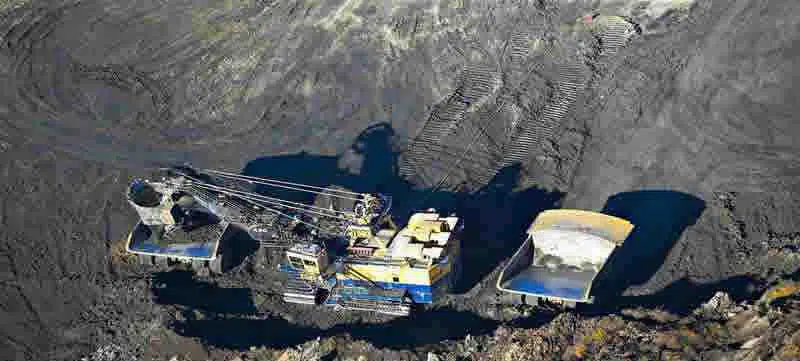Rate this page
Tar sand
Home » Tar sand

Tar sand
Tar sand is combination of sands, sandstones, or diatomaceous earth, saturated with relatively heavy hydrocarbon materials resembling low gravity crude petroleum. The tar sand is surveys of these deposits have revealed that they contain tremendous quantities of hydrocarbon materials very similar to low gravity crude petroleum and individual deposits have been estimated to contain of the order of 60 to 70 million barrels of tar sand oil. Tar sands can be mined and processed to extract the oil-rich bitumen, which is then refined into oil. The bitumen in tar sands cannot be pumped from the ground in its natural state; instead tar sand deposits are mined, usually using strip mining or open pit techniques, or the oil is extracted by underground heating with additional upgradingApplication of tar sand
After mining, the tar sands are transported to an extraction plant, where a hot water process separates the bitumen from sand, water, and minerals. The separation takes place in separation cells. Hot water is added to the sand, and the resulting slurry is piped to the extraction plant where it is agitated. The combination of hot water and agitation releases bitumen from the oil sand, and causes tiny air bubbles to attach to the bitumen droplets, that float to the top of the separation vessel, where the bitumen can be skimmed off. Further processing removes residual water and solids. The bitumen is then transported and eventually upgraded into synthetic crude oil.Processing of tar sand
A solvent extraction process for tar sands is disclosed wherein a low boiling solvent having a normal boiling point of from 20° to 70° C. is used to extract tar sands. The solvent is mixed with tar sands in a dissolution zone, the solvent: bitumen weight ratio being maintained at from about 0.5:1 to 2:1. This mixture is passed to a separation zone in which bitumen and inorganic fines are separated from extracted sand, the separation zone containing a classifier and countercurrent extraction column. The extracted sand is introduced into a first fluid-bed drying zone fluidized by heated solvent vapors, so as to remove unbound solvent from extracted sand while at the same time lowering the water content of the sand to less than about 2 wt. %. The so-treated sand is then passed into a second fluid-bed drying zone fluidized by a heated inert gas to remove bound solvent. Recovered solvent is recycled to the dissolution zone.Chemical composition of tar sand
|
TEST METHOD |
RESULT |
TEST |
NO |
|
ASTM-D3174 |
5~20 |
ASH CONTENT,WT% |
1 |
|
ASTM-D3173 |
3% |
MOISTURE CONTENT,WT% |
2 |
|
ASTM-D3175 |
63 |
VOLATILE MATTER,WT% |
3 |
|
ASTM-D3172 |
29~35 |
FIXED CARBON,WT% |
4 |
|
ASTM-D4 |
81~60 |
SOLUBILITY IS CS2,WT% |
5 |
|
ASTM-D3289 |
1.11 |
SPECIFIC GRAVITY @25 C |
6 |
|
ASTM-D3279 |
79 |
NORMAL HEPTHAN INSOLUBLES,WT% |
7 |
|
——————- |
Black |
COLOR IS MASS |
8 |
|
——————- |
Brown |
COLOR IN STREAK OR POWDER |
9 |
|
ASTM-D36 |
180~205 |
SOFTENING POINT,C |
10 |
|
ASTM-D5 |
0 |
PENETRATION @25C |
11 |
|
ELEMENT ANALYSIS APPROX. |
|||
|
ASTM-D5291 |
74 |
CARBOB,WT% |
1 |
|
ASTM-D5291 |
7.1 |
HYDROGEN,WT% |
2 |
|
ASTM-D5291 |
0.67 |
NITROGEN,WT% |
3 |
|
ASTM-D5291 |
3.1 |
OXYGEN,WT% |
4 |
|
LECO(S)ANALYZER |
4 |
SULPHURE,WT% |
5 |